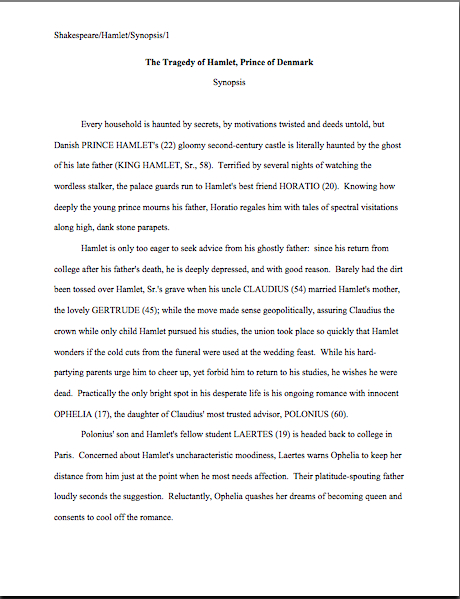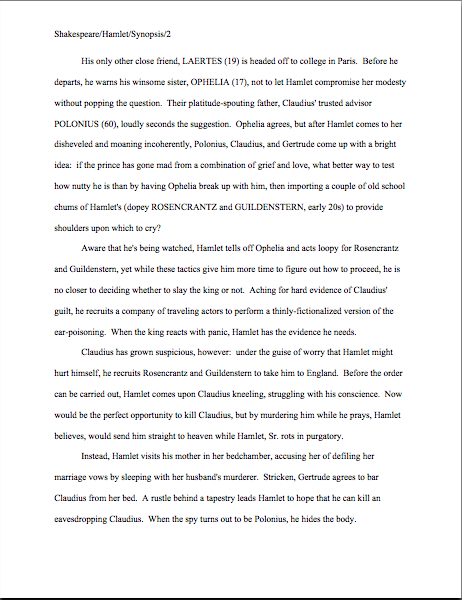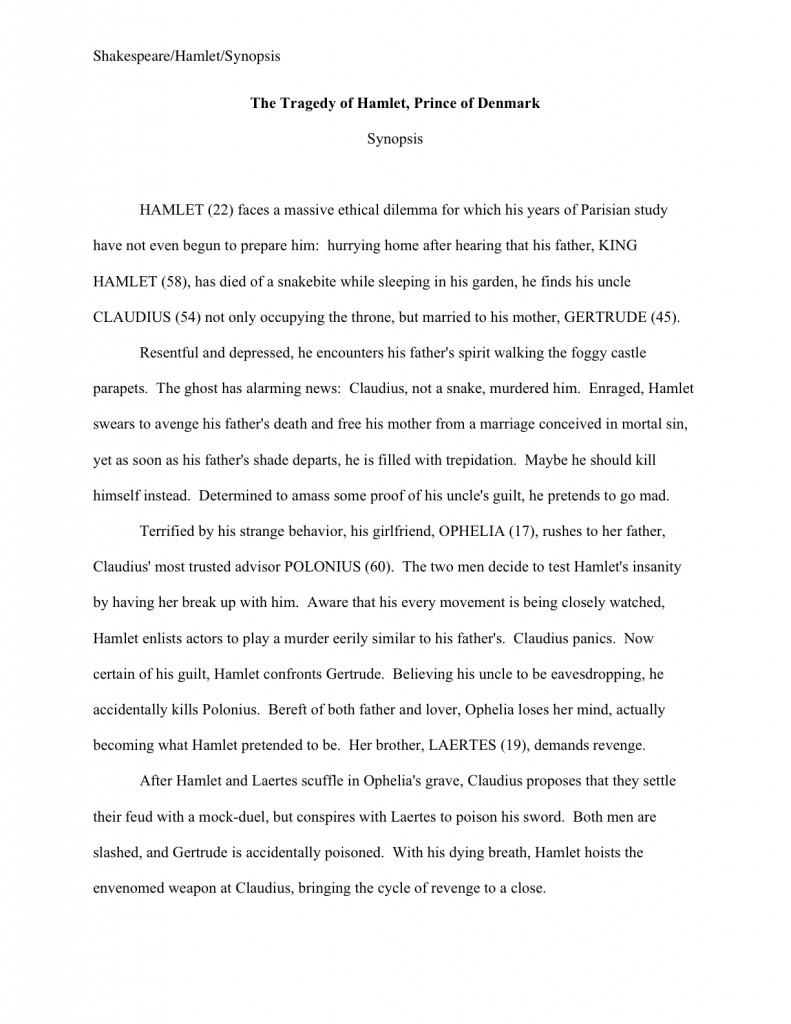
Still hanging in there, campers? For those of you joining us late — which is to say, those of you who blinked for a minute or didn’t happen to have tuned in yesterday, when I changed my mind about how I was going to handle our series-in progress — I imagine you are a trifle stunned by how many posts on the mysteries and challenges of writing a 1-page synopsis I have managed to toss up here in a remarkably short time.
“What happened?” I hear the newcomers shouting. “There we were, working our way through a hasty yet thorough discussion on contest entry preparation — and all of a sudden, here are three posts on how to construct a 1-page synopsis! Ack, there’s a fourth! What fresh madness is this?”
Actually, it’s an ongoing madness. Since the postmark deadline for the writing contest I have been planning to use this very evening as a rule exemplar, the William Faulkner/William Wisdom Literary Competition is this coming Tuesday, and as part of its complicated charm lies in (a) its being one of the relatively few contests for previously-unpublished writers that accept book-length entries (yes, really), (b) it also has a Novel-in Progress category, (c) entering either category requires the construction of a 1-page synopsis, and I know from lengthy experience that (d) most aspiring writers would cheerfully opt for wrestling seven live alligators if it would get them out of writing a 1-page synopsis for a 350-page book, I though this might be a dandy time for a crash review of how to write one.
Don’t understand why writing a page of text might be a daunting challenge for someone who, after all, likes to write? Well, let me put it this way: see that gigantic second sentence in the last paragraph? That’s 129 words. A double-spaced 1-page synopsis runs about 400 words. And I wasn’t trying to describe a complex plot.
Those alligators are looking better now, aren’t they?
Last night’s three posts were about how to figure out what does and does not belong in a 1-page synopsis. Today’s extra posts — oh, you thought I wasn’t still going to post on contest rules and how to follow them this evening? How long have you known me? — will focus on the differences between a 1-page synopsis and its longer siblings. Should help those of you trying to pull that contest entry together figure out how to streamline your synopsis.
I have to say, I’m kind of tickled to have the excuse to re-run this post. It’s one of my all-time favorites — and, appropriately enough, it was written in the course of another blogging orgy.
Besides, its subject matter had also been on my mind this week, as I had been reading Nicole Galland’s terrific new retelling of OTHELLO, I, Iago. Could not put it down, as they say, until I finished it in the wee hours. And you know how closely I read text; it’s not easy to draw me that deeply into a story unless the writing is impeccable.
So I have a lot of Shakespeare rattling around in my brain at the moment. Ho there! Enjoy!
Welcome to this weekend’s expedited Synopsispalooza offerings. For those of you who missed yesterday evening’s teaser, I shall be posting twice per day this weekend (at roughly 10:30 am and 7:30 pm Pacific time) in order to cram as many practical examples of solid synopses of various lengths in front of my readers’ astonished eyes.
Why go to such great lengths? Well, perhaps I’m mistaken, but my bet is that most of you have never seen a professional synopsis before, other than the few fleeting glimpses I’ve given you throughout Synopsispalooza. So while I’ve given you formatting examples, a few 1-pagers, counterexamples, and a whole lot of guidelines, some of you may still be having difficulty picturing the target at which you are shooting.
Amazing how often that’s the case with the pieces of paper commonly tucked into a query or submission packet, isn’t it? The overwhelming majority of queriers have never seen a successful query; a hefty proportion of synopsizers have never clapped eyes upon a professionally-written synopsis; herds and herds of submitters have never been within half a mile of a manuscript in standard format, and a vast multitude of newly-signed writers have absolutely no idea even how to begin to organize an author bio on the page.
And some people wonder why I keep blogging on the basics. I’m not a big fan of guess what color I’m thinking submission standards.
Since my brief for this weekend is to generate a small library of practical examples, contrary to my usual practice, I’m not going to dissect each synopsis immediately after they appear. Instead, I’m going to leave them to you to analyze. In the comments, if you like, or in the privacy of your own head.
I can already feel some of you beginning to panic, but fear not — you already have the tools to analyze these yourself. We’ve just spent 13 posts going over what does and doesn’t work well in a synopsis, right? I’m confident that you are more than capable of figuring out why the various elements in these examples render them effective.
My goal here today is to give you a sense of the scope of storytelling appropriate to three commonly-requested lengths of synopsis. Because deny it as some of you might, I still harbor the sneaking suspicion that there are a whole lot of aspiring writers out there who are mistakenly trying to cram the level of detail appropriate to a 5-page synopsis into a 3- or 1-page synopsis.
That way lies madness, of the O, that this too too solid text would melt, thaw and resolve itself into a shorter synopsis! variety. Trust me, unless you actively long to be complaining that the Everlasting had not fix’d
His canon ‘gainst self-slaughter, you don’t want to venture down that primrose path.
Besides, the ever-popular cram-it-all-in strategy isn’t likely to produce a successful shorter synopsis. As I’ve pointed out repeatedly throughout this series, the goal of a 1-page synopsis is not the same as a longer one. No one who requests a single-page synopsis seriously expects to see the entire plot summarized in it, as is routinely expected in a 5-page synopsis.
What might those different expectations yield on the synopsis page? Glad you asked; read on.
A quick caveat or two before you do: these are not intended to be the only possible synopses for this particular story; they’re quick-and-dirty stabs at it in a couple of hours while icing my knee. (I overdid this week; I’m reclining on pillows as I write this.) So kindly spare me quibbles about how I could have improved these or made them conform more closely to the text. I already know that once or twice, I presented some of the events out of chronological order, for ease of storytelling.
But guess what? If Millicent the agency screener asks to read your entire manuscript based upon your synopsis, she is not going to call you up to yell at you because they did not match up precisely. Nor will her boss, the agent of your dreams, or a contest judge. In fact, there is literally no point along the road to publication, except perhaps in a writing class, that anyone with the authority to yell at you is at all likely to perform a compare-and-contrast between your synopsis and your manuscript, checking for discrepancies.
Again, absolute literal accuracy is not expected in a synopsis; the pros are aware that plotlines will change slightly with subsequent revisions. What’s important here is presenting the story arc well — and that it comes across as a good story.
I am anticipating that many of you will know the story well enough to catch minor chronological rearrangement, by the way; this is a far more useful exercise if the story being presented is one with which you’re familiar. Besides, I wanted to stick with something in the public domain.
With those broad hints, and the assistance of that moody pick of Sir Larry above, most of you have probably tumbled to it already: you’re about to read several synopses of HAMLET.
Why HAMLET, and not, say, ROMEO AND JULIET, which is a bit better-known in this country? Partially, I chose it because in many ways, it’s the ultimate literary fiction storyline: it’s about a passive guy who sits around thinking about all of the negative things going on in his life and planning that someday he’ll do something about them.
Okay, so that’s a stereotype about literary fiction, but it’s a clich? for a reason. As any Millicent working in a LF-representing agency would happily tell you, far too many would-be LF writers mistakenly believe that the less that happens in a manuscript, the more literary it is.
That’s a misconception: what differentiates LF from other fiction is usually the vocabulary and sentence structure choices; LF assumes a college-educated readership (whereas most mainstream fiction is pitched at about a 10th-grade reading level), and often engages in experimental storytelling practices. Let’s face it, the kinds of sentences that Toni Morrison can make sing most emphatically would not work in other book categories. But I digress.
The other reason to choose HAMLET is that while most of you have probably seen it at least once, I’m betting that very few of you have ever seen it performed live in its entirety. Even the most text-hugging of theatre companies usually cuts an hour or so out of the play. (The major exception: Kenneth Branaugh’s film version does in fact contain every word. You’ll feel as though you’ve spent a month watching it, but there is a lovely Hamlet-Horatio scene that I’ve never seen performed in any other version.)
So I’m synopsizing a story that pretty much everybody has seen or heard synopsized, at least a little. That should prove helpful in understanding what I have chosen to include and exclude in each version.
To head off whining at the pass: yes, the lettering here is rather small and a bit fuzzy at the edges; that’s the nature of the format. To get a clearer view, try holding down the COMMAND key and hitting + repeatedly, to enlarge the image.
But before anybody out there gets the bright idea to steal any of this and turn it in as a term paper, this is copyrighted material, buddy. So you wouldn’t just be cheating; you’d be breaking the law.
So there. I didn’t go to all of this trouble so some con artist could avoid reading a classic. (Hey, I said that writing synopses was easy for a pro, not that it was even remotely enjoyable.)
Caveats completed; time to leap into the fray. Here, for your perusing pleasure, is a 5-page synopsis of The Tragedy of Hamlet, Prince of Denmark:





Pop quiz: I’ve deliberately made a really, really common mistake here, to show you all just how easy it is not to notice when tossing together a synopsis in a hurry. Did anyone catch it?
If you immediately raised your hand and shouted, “You misspelled Yorick’s name!” give yourself a gold star. You wouldn’t believe how often writers misspell the names of their own characters in synopses — or forget that between the time they originally wrote the synopsis for that contest that sounded so promising and when an agent asked for the first 50 pages and a 5-page synopsis, the protagonist’s best friend’s name had changed from Monica to Yvette, because Monica might strike a skimming reader as too similar to Mordred, the villain’s name.
And what’s the cure for that type of gaffe, everyone? Sing out loudly, please: read your synopsis IN HARD COPY, IN ITS ENTIRETY, and OUT LOUD before you send it anywhere, anytime. And do it every single time you are asked to send it out; things change.
The 5-page synopsis was the industry standard for many years, and probably still the one you will be asked to produce after you have signed with an agent. In these decadent days of wildly different submission guidelines across agencies and contests, however, aspiring writers are asked to produce something shorter.
As I believe I have mentioned about 1700 times on the blog at this point, read the guidelines several times over before you submit or enter so much as a syllable. If the requester doesn’t specify how long the synopsis should be, then the length is up to you.
Just keep it under 5 pages. Longer than that, and you’ll just look as though you don’t have any idea how long it should be. If you go less than 5, fill the pages in their entirety (or close to it), so the length will seem intentional.
Tell the entire story in a 3- or 4-page synopsis. If you already have a 5-page version handy, you can often get there by simply lightening the level of detail. Like so:



For a 1- or 2-page synopsis, the goal is different. While it is perfectly acceptable to depict the entire story arc, introducing the major characters, central conflict, and what’s at stake will do very nicely.
Which is to say: don’t even try to cut down a 5-page synopsis into a 1-page; it will only irritate you to the hair-yanking stage. Instead, start fresh:

As you may see, I actually have covered the entire plot here, if a bit lightly. I’ve introduced the major characters and their main conflicts — and no more. I didn’t waste a paragraph describing the castle; I didn’t feel compelled to show what the characters looked like; I avoided incorporating clich?s about procrastination. Yet I’ve demonstrated that this story is interesting and holds together.
In other words, I did the writer’s job: I wrote a 1-page overview of the plot. Ta da!
Or rather, I wrote a 1-page synopsis geared toward convincing a literary or mainstream fiction-representing agent to ask to see the manuscript. If I were trying to market HAMLET as, say, a paranormal thriller, I would present it differently.
How differently, you ask? Take a gander. Just to keep things interesting, this time, I’ll do it as a 2-page synopsis:


Reads like quite a different story, does it not? Yet all that was required to pull that off was a slight tone shift, a tighter focus on the grislier aspects of the story, and an increased emphasis on the ghost’s role in the plot, and voil? ! Paranormal thriller!
That was rather fun, actually. Want to see the same story as a YA paranormal? Here you go:


The moral, should you care to know it: although most first-time novelists feel utterly controlled by the length restrictions of a requested synopsis, ultimately, the writer is the one who decides how to present the story. Only you get to choose what elements to include, the tone in which you describe them, and the phrasing that lets Millicent know what kind of book this is.
Makes you feel a bit more powerful, doesn’t it?
Tune in this evening for more empowering examples. Enjoy the control, campers, and keep up the good work!